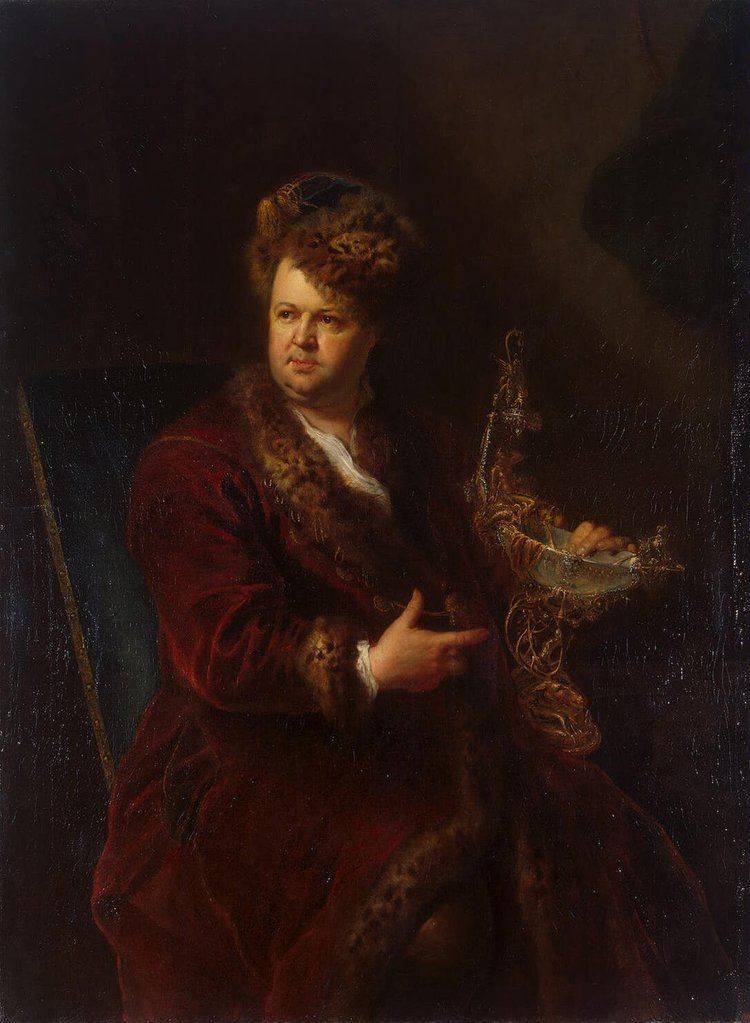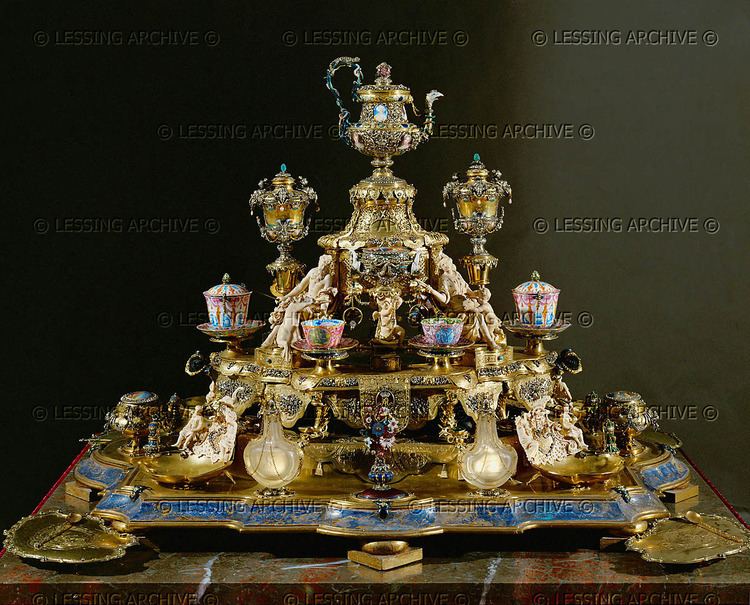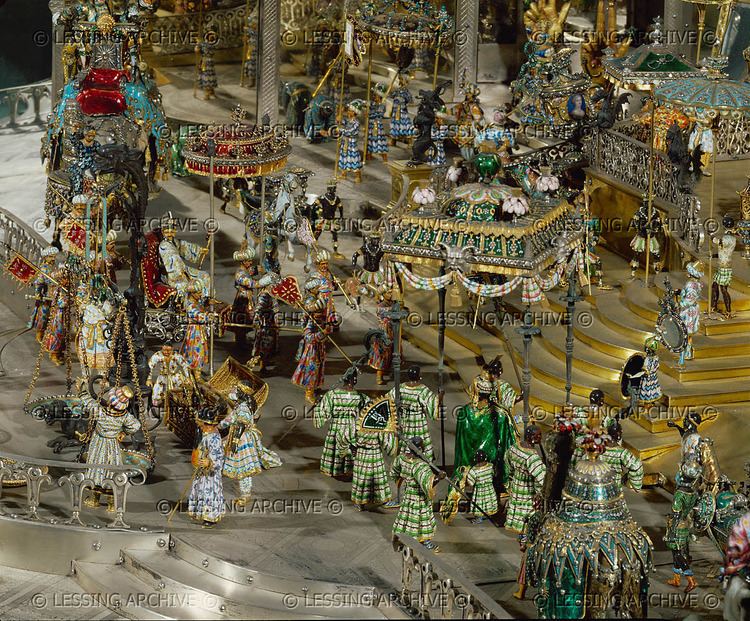Name Johann Dinglinger | ||
 | ||
Died March 6, 1731, Dresden, Germany | ||
ЮВЕЛИРНЫЕ ШЕДЕВРЫ ИОГАННА МЕЛЬХИОРА ДИНГЛИНГЕРА (Johann Melchior Dinglinger)
Johann Melchior Dinglinger (26 December 1664 –6 March 1731) was one of Europe's greatest goldsmiths, whose major works for the elector of Saxony, Augustus the Strong, survived in the Grunes Gewolbe (the "Green Vaults"), Dresden. Dinglinger was the last goldsmith to work on the grand scale of Benvenuto Cellini and Wenzel Jamnitzer, fewer of whose large-scale works in precious materials have survived, however. His work carries on in a Mannerist tradition into the "Age of Rococo".
Contents

Biography

Dinglinger was born in Biberach an der Ris (today in Baden-Wurttemberg). He served his apprenticeship in Ulm, after which he refined his techniques working as a journeyman in Augsburg, Nuremberg and Vienna, three traditional centers of luxury arts. He went to Dresden in 1692, where he spent the rest of his career in the service of Augustus, by whom he was appointed court jeweller in 1698. In the workshop he established, he was assisted by his younger brothers, the enameller Georg Friedrich Dinglinger (1666–1720) and Georg Christoph Dinglinger (1668–1728), who specialized in cutting and setting jewels. The sculptor Balthasar Permoser collaborated as a modeller in Dinglinger's workshops.
Dinglinger married five times and had twenty-three children, of whom eleven survived to maturity. The famous house he erected in Dresden was burned in the Seven Years' War. He died in Dresden.
Works
Dinglinger's major works, all for Augustus:


